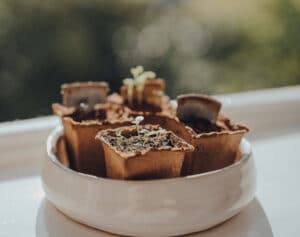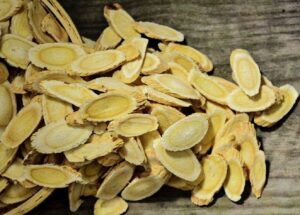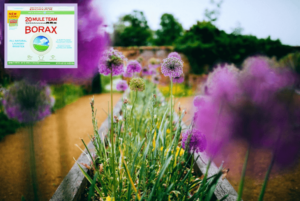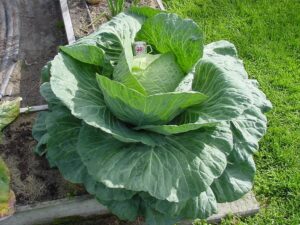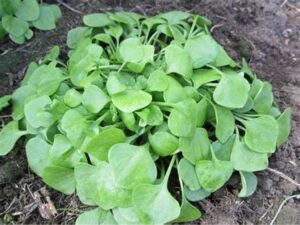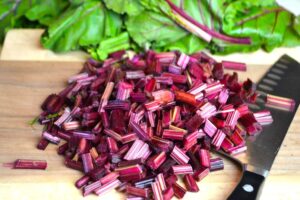UPDATE 03-23-2023 Natural medicine for diabetes, asthma, epilepsy, liver disease, HIV, cancer, osteoarthritis, burns, sunburn, psoriasis, frostbite… and the forgotten beneficial effect on brain health.
Eindtijdnieuws.com
March 18, 2023
Aloë Vera is often called the ‘plant of immortality’ because it can live and bloom without soil.
It is a member of the Asphodelaceae family, along with more than 400 other species of Aloë.
Aloë Vera has been used in traditional medicine for thousands of years
And studies have linked Aloë Vera to various health benefits as well. For example, the plant is used to treat sunburns, fight dental plaque, and lower blood sugar levels.
Over 75 active nutrients!
In addition, Aloë Vera is rich in nutrients with more than 75 potentially active compounds, including vitamins, minerals, enzymes, amino acids, fatty acids, and polysaccharides.
However, you may wonder whether the plant is safe for consumption.
This article tells you whether you can eat Aloë Vera, and why you should.
Heal the Stomach & Gut With ALOE VERA _ Dr. Mandell
Translation => Click on the CC (subtitle) button > then click the Gear wheel > Subtitles > Automatic translation > Choose your language
Aloë Vera leaves are generally safe to eat
Aloë Vera leaves are comprised of three parts: the skin, the gel, and the latex
They’re best known for their gel, which is responsible for most of its health benefits. While most people apply the gel to their skin, it’s also safe to eat when prepared right.
Aloë Vera gel has a clean, refreshing taste. The gel can be added to a variety of recipes, including smoothies and salsas and salads.
How to prepare the gel of the Aloë Vera?
To prepare the gel, cut off the spiky edges on the top and alongside the Aloë Vera leaf, that you harvested with a clean knife. Next, slice off the skin on the flat side, remove the clear gel and dice it into small cubes.
How to remove the latex of the Aloë Vera?
Make sure to wash the gel cubes thoroughly to remove all traces of dirt, debris and residue. Latex residue can give the gel an unpleasant bitter taste. The latex is a thin layer of yellow liquid between the skin and the gel of the leaf. It contains compounds with powerful laxative properties, such as aloin.
Eating too much latex can have serious and potentially fatal side effects.
How to eat the Aloë Vera skin?
In contrast, the Aloë Vera skin is generally safe to eat. It has a mild flavor and a crunchy texture, perfect for adding to your salads. Alternatively, the skin can be enjoyed by dipping it in salsa or hummus.
To prepare the skin, cut off the spiky edges on the top and alongside the plant and slice off the skin on the flat side. Make sure to wash the skin thoroughly to remove any dirt, debris and latex.
You can soak it in water for 10–20 minutes before eating it if you find it too tough to chew.
It’s very important to choose leaves from the Aloë Vera plant and not from other Aloë species, as these may be poisonous and therefore unfit for human consumption.
Avoid eating Aloë Vera skin care gels
Of course, Aloë Vera skin care gels and products are not meant to be eaten! Instead, they’re manufactured to help soothe sunburns, reduce inflammation, moisturize, relieve itchiness, and treat a variety of other skin concerns. However, processing methods can strip away Aloë Vera gel’s active ingredients, which are otherwise responsible for the health benefits that come from eating the gel!
Potential health benefits of eating Aloë Vera
Consuming Aloë Vera gel from the leaf has been linked to potential health benefits. Other parts of the plant have been linked to benefits as well. Here are some potential benefits of eating Aloë Vera:
Boosts memory: In one animal study, consuming Aloë Vera gel helped enhance learning and memory, while also reducing symptoms of depression.
Reduces blood sugar levels: In human and animal studies, Aloë Vera gel helped reduce blood sugar levels by increasing insulin sensitivity.
Suppresses inflammatory signals: In animal and test-tube studies, Aloë Vera extract suppressed inflammatory signals such as TNFα, IL-1 and IL-6.
Reduces dental plaque: If used as a mouthwash, Aloë Vera juice may be as effective as a regular mouthwash in reducing dental plaque build-up.
Is rich in antioxidants: Regularly eating Aloë Vera gel may raise blood antioxidant levels. Antioxidants help combat the damage caused by free radicals, which are compounds linked to many chronic diseases.
But there is much more that Aloë Vera does to your body!
Abstract
Certain food products for instance, berries, nuts, pomegranate, chocolate, etc., are known to improve cognitive function, memory skills, learning capacity and to maintain good brain health. Such plant supplements address only certain concerns like oxidative stress or inflammation but Aloë Vera has the unique advantage of being therapeutically effective in reducing oxidative damage, inflammation, increasing vasodilatation, treating tumors and neurodegenerative disorders, as well as an effective drug in maintaining general brain health and memory. Aloë Vera has also been proven to possess cholinergic and cognitive enhancing capabilities. Today, Aloë Vera is used as an alternate medicine for diabetes, asthma, epilepsy, hepatic disease, HIV, cancer, osteoarthritis, burns, sunburns, psoriasis and frostbite amongst many others.
Thus, Aloë Vera presents a complete powerhouse of nutritional and therapeutic uses thus giving it a distinct advantage over other such sources. Here, we review the beneficial effect of the commonly used traditional plant, Aloë Vera on the brain health.
Note:
Consuming Aloë Vera gel is not advised for people taking diabetes, heart or kidney medications, as it may worsen potential side effects from the Big Pharma drugs.
Sources:



